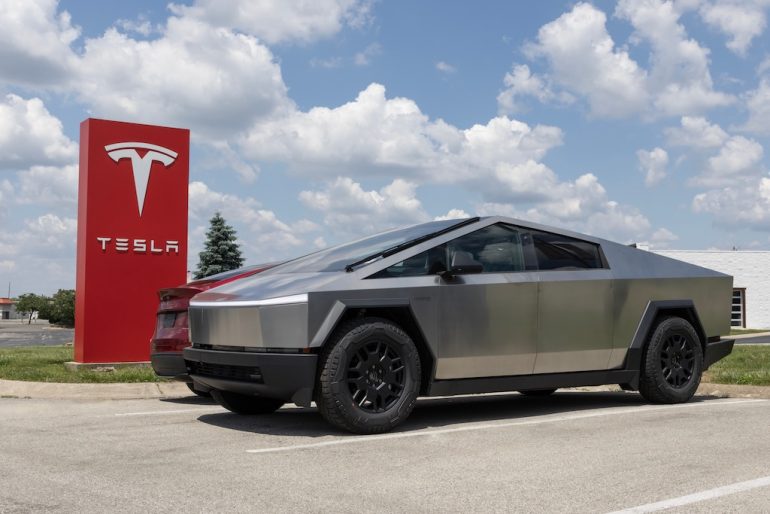Automotive

Tesla’s financial trajectory has taken a sharp dive in the first quarter of 2025, underscoring the pressures mounting on the electric vehicle pioneer as it grapples with weak sales, shifting consumer sentiment, and intensifying global headwinds. The latest earnings report paints a sobering picture, with net income falling a staggering 71% year-over-year—a signal that the brand’s once-impervious edge in the EV market is starting to erode.
A Bleak Quarter by the Numbers
Tesla posted $409 million in net income on $19.3 billion in revenue after delivering nearly 337,000 vehicles in Q1. This marks Tesla’s worst delivery performance in over two years and follows its first-ever year-over-year decline in sales volume. The financial report also reveals that Tesla’s profit margin was buoyed by $595 million in zero-emissions tax credit sales. Without those credits, the automaker would have dipped into the red.
The numbers are an alarming shift from a company that just a few years ago was comfortably outperforming traditional automakers on profit margins. At the same time last year, Tesla saw profits dip 55% to $1.13 billion, primarily due to price cuts across its lineup. Even then, it managed to maintain profitability in a declining environment. This year, the story is different—the cracks are more visible, and the path forward is less certain.
Geopolitical Risks and Brand Headwinds
Tesla warned shareholders about the broader political climate and its potential toll on demand. The return of Trump-era tariffs and a shifting geopolitical landscape, particularly with China, could impact both its automotive and energy divisions. Tesla specifically noted that its energy business would be disproportionately affected, though it stopped short of providing detailed forecasts.
Adding to the company’s woes is CEO Elon Musk himself. His polarizing political leanings and recent alignment with far-right narratives have created brand turbulence. While Tesla once enjoyed near-universal appeal among early adopters and eco-conscious buyers, consumer sentiment has shifted. The association with Musk’s political persona has alienated some would-be customers, which could be contributing to sluggish sales figures.

Product Pipeline and Delays
Despite the challenges, Tesla insists it remains on course with future product plans. The company reaffirmed its commitment to launching more affordable EV models, stating that production is expected to begin in the first half of 2025. These vehicles will use elements of a next-generation platform—likely tied to its much-hyped Robotaxi initiative—but will be built on existing production lines shared with the Model 3 and Model Y.
However, recent reports suggest internal timelines may be slipping. A Reuters piece last week claimed delays in the rollout of the first next-gen affordable EVs, contradicting Tesla’s public statements. This isn’t the first time Tesla has had to fend off doubts about its ambitious launch schedules, and it may not be the last.
Cybertruck and the Robotaxi Gamble
The launch of the Cybertruck was expected to inject new energy into Tesla’s lineup, but it hasn’t delivered the boost Musk anticipated. With the core sedan and SUV lineup aging—despite receiving cosmetic updates—Tesla is relying heavily on future-facing projects like Robotaxi and the humanoid Optimus robot to regain its edge.
Musk has teased an initial Robotaxi rollout in Austin as early as June, with expansion into more cities by year’s end. Yet he’s provided few concrete details about how the service will operate, and Tesla’s vehicles still haven’t proven they can safely drive without human oversight. Internal documents reported by The Information suggest the Robotaxi service could be unprofitable for a long time, raising further questions about the sustainability of Tesla’s forward-looking bets.
Trying to Stay Afloat
Tesla’s quarterly profit trend has been anything but consistent. After the Q1 plunge in 2024, the company bounced back slightly in Q2 with $1.5 billion in profit, though that was still down 45% from the previous year. Much of that rebound came from a record $890 million in regulatory credit sales, again highlighting how reliant Tesla has become on non-core revenue streams to remain profitable.
As 2025 unfolds, Tesla finds itself at a crossroads. It’s balancing the weight of waning consumer enthusiasm, volatile global trade dynamics, an uncertain political environment, and the internal struggle to execute bold—but unproven—technological promises. The coming months will test not only Tesla’s ability to deliver cars but also whether it can hold onto its identity in an increasingly competitive and politically charged EV landscape.
FOLLOW US TODAY:

